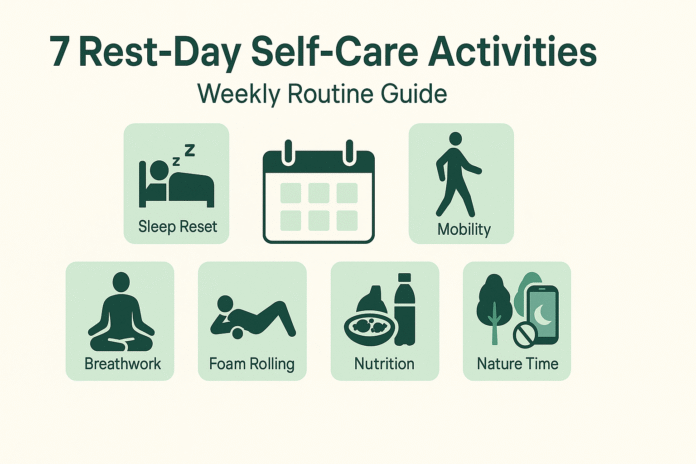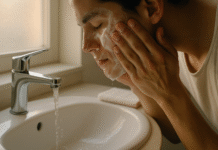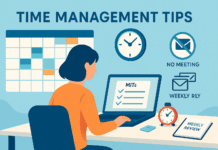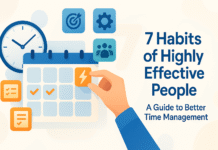Rest days aren’t “days off.” They’re when your body and mind do the behind-the-scenes work that makes every other day better—repairing tissue, rebalancing hormones, settling your nervous system, and restoring motivation. In this guide, you’ll learn seven evidence-informed self-care activities to weave into your weekly routine for rest days so you recover faster, reduce stress, and show up stronger for training and life.
You’ll get clear, beginner-friendly steps, time estimates, simple gear suggestions, safety notes, and short mini-plans for each activity—plus a quick-start checklist, troubleshooting tips, ways to measure progress, a four-week starter plan, and answers to common questions. This is for active people of all levels: from weekend walkers to strength trainees, from busy professionals to parents squeezing in workouts between commitments.
Disclaimer: The ideas below are educational and not a substitute for medical advice. If you have a health condition, injury, or concerns about specific practices, consult a qualified professional before changing your routine.
Key takeaways
- Rest days are active by design. Gentle movement, mobility work, sleep routines, and breathwork help you recover and reduce stress without draining energy.
- Small, repeatable systems beat “perfect” plans. A 20-minute walk and 10 minutes of mobility on the same day does more over time than occasional epic sessions.
- Track what matters. Simple metrics—sleep hours, daily steps, perceived energy, muscle tightness, and mood—show whether your self-care plan is working.
- Safety first. Keep intensities easy, skip anything that causes pain or dizziness, and progress gradually.
- Consistency compounds. The same seven activities, repeated weekly, create a flywheel for recovery, mental clarity, and long-term fitness.
Quick-Start Checklist for Rest-Day Self-Care (10 minutes)
- Pick your rest days (e.g., Wednesday and Sunday).
- Pre-block 45–60 minutes on those days for self-care (calendar reminder helps).
- Set a sleep target for the night before and of your rest day (at least 7 hours).
- Lay out your walk kit (comfortable shoes, water bottle, light hat).
- Place a foam roller / ball where you’ll see it.
- Download a timer app and a basic breathwork/meditation app or use your phone timer.
- Choose a green spot for nature time (park, courtyard, balcony plants).
- Print or save the 4-week plan at the end of this article.
1) Sleep Reset & Wind-Down Routine
What it is & why it matters
Sleep is the master recovery tool. On rest days, a simple wind-down ritual helps you bank “high-quality” sleep, which supports muscle repair, immunity, memory consolidation, and mood regulation. Even one extra hour of solid sleep can make the next training day feel smoother and more focused.
What you need (and low-cost alternatives)
- Needs: A consistent bedtime window, a dimmable lamp or warm bulb, an alarm for “screens-off,” and a cool, quiet room.
- Nice-to-have: Eye mask, blackout curtains, white-noise machine, or fan.
- Low cost: Swap blackout curtains for tacked-up dark fabric; use a cheap eye mask and a free fan app for noise.
Step-by-step (20–40 minutes in the evening)
- Set your “digital sunset.” One hour before bed, silence notifications and dim screens.
- Low-light signal. Switch to lamps or warm bulbs; avoid overhead bright lights.
- Gentle decompression. 5–10 minutes of light mobility, a warm shower, or reading.
- Breath downshift. 5 minutes of slow nasal breathing (see Activity #4).
- Bedroom sweep. Cool the room, close blinds, lay out clothes for tomorrow.
- Lights out—same time nightly as often as possible.
Beginner modifications & progressions
- If evenings are chaotic: Do a micro routine: 2 minutes of breathwork + eye mask + lights out.
- Progression: Add a 15-minute pre-sleep stretch or guided relaxation a few nights per week.
Frequency, duration & metrics
- When: Night before and the night of every rest day.
- Goal: At least 7 hours of sleep; aim for a regular bedtime window.
- Track: Bedtime consistency, sleep hours, morning energy (1–5), and wake-ups.
Safety & common mistakes
- Avoid: Caffeine within 6–8 hours of bedtime, alcohol near bedtime, bright overhead lights late at night.
- Don’t chase perfection. Missing a night isn’t failure—resume the routine the next day.
Mini-plan snapshot
- Tonight 9:30 pm: Screens off, lamp on.
- 9:35 pm: 5 minutes slow breathing; lay out clothes.
- 10:00 pm: Lights out with eye mask.
2) Mobility & Gentle Stretching Session
What it is & why it matters
Mobility blends controlled movement through range with light stretching to keep joints happy and muscles supple. On rest days, it eases stiffness from training and desk work without taxing your nervous system.
What you need (and low-cost alternatives)
- Needs: Floor space, comfy clothes.
- Nice-to-have: Yoga mat, strap or towel, light resistance band.
- Low cost: A towel as a strap; carpet instead of a mat.
Step-by-step (12–20 minutes)
- Warm-up (2 minutes): Cat-cow, shoulder circles, ankle rocks.
- Hips (3–5 minutes): 90/90 switches; half-kneeling hip flexor stretch.
- T-spine & shoulders (3–5 minutes): Open-book rotations; doorway pec stretch.
- Hamstrings & calves (3–5 minutes): Supine hamstring strap stretch; calf wall stretch.
- Finish (2 minutes): Easy neck range—slow yes/no/maybe motions.
Beginner modifications & progressions
- If tight: Reduce stretch intensity; think “mild tension,” not pain.
- Progression: Add controlled articular rotations and end-range holds for 10–20 seconds.
Frequency, duration & metrics
- When: Every rest day; optionally 5–10 minutes on training days.
- Duration: 12–20 minutes.
- Track: Areas that feel tight (note them), and a 0–10 “ease of movement” rating after.
Safety & common mistakes
- Don’t bounce in static stretches.
- Keep breathing; if you’re holding your breath, you’re going too hard.
- Pain = stop or regress the position.
Mini-plan snapshot
- During lunch: 15-minute “mobility snack.”
- Evening: 5 minutes of doorway pec + hip flexor stretch while dinner is cooking.
3) Active Recovery Walk (or Easy Cycle/Swim)
What it is & why it matters
Active recovery is low-intensity movement that promotes blood flow, joint lubrication, and gentle tissue loading. It’s the sweet spot between doing nothing and doing too much, and it leaves you more refreshed than when you started.
What you need (and low-cost alternatives)
- Needs: Comfortable shoes; optional simple step counter (phone).
- Nice-to-have: Shaded route or treadmill; light hat; water bottle.
- Low cost: Walk laps in your building, local street loop, or mall if weather is extreme.
Step-by-step (20–40 minutes)
- Start easy. First 5 minutes at conversational pace.
- Settle into “very easy.” You should be able to talk in full sentences without gasping.
- Optional rhythm breaks. Every 5–10 minutes, add 30–60 seconds of slightly brisker pace, then back to very easy.
- Finish gentle. Last 3–5 minutes slow and relaxed.
- Hydrate afterward.
Beginner modifications & progressions
- If time-crunched: Do two 10-minute walks (morning/evening).
- If joint-sensitive: Swap in easy cycling or easy swimming for the same time.
- Progression: Increase duration by 5 minutes per week up to 45–60 minutes, keeping effort low.
Frequency, duration & metrics
- When: Every rest day.
- Duration: 20–40 minutes.
- Track: Steps for the day, perceived exertion (target: easy), and how your legs feel afterward.
Safety & common mistakes
- Don’t turn this into a workout. If your breathing becomes labored, slow down.
- Heat, humidity, or smog? Choose indoor options.
- If you feel dizzy or experience pain, stop and reassess.
Mini-plan snapshot
- Morning: 10 minutes around the block.
- Evening: 20 minutes in the park at a relaxed pace.
4) Breathwork & Mindfulness Reset
What it is & why it matters
Slow, structured breathing and short mindfulness practices dial down sympathetic arousal and help your nervous system recover. Think of this as a manual “calm switch” you can activate on rest days to improve sleep quality, reduce perceived stress, and increase clarity.
What you need (and low-cost alternatives)
- Needs: A timer and a quiet-ish spot.
- Nice-to-have: A cushion or chair and a simple breathwork/meditation app.
- Low cost: Sit against a wall; use your phone’s timer.
Step-by-step (5–12 minutes)
Pick one of the following:
- Box breathing (4-4-4-4): Inhale 4s, hold 4s, exhale 4s, hold 4s. Repeat 10–15 cycles.
- Extended exhale (4-6 or 4-8): Inhale 4s, exhale 6–8s. Repeat 5–10 minutes.
- Resonance breathing (~6 breaths/min): Inhale 5s, exhale 5s, breathing softly through your nose. 5–10 minutes.
Then sit quietly for 1–2 minutes and notice how your body feels.
Beginner modifications & progressions
- If breath holds feel edgy: Skip holds; extend the exhale instead.
- If nasal breathing is hard: Start with gentle mouth exhales; progress to nasal as clear.
- Progression: Increase to 10–15 minutes, add a 2–3 minute body scan, or practice twice per day on rest days.
Frequency, duration & metrics
- When: At least once on every rest day; optionally before bed.
- Duration: 5–12 minutes per session.
- Track: Pre/post stress (1–10), breathing rate, and whether you fall asleep faster at night.
Safety & common mistakes
- Don’t force deep breaths; keep them quiet and effortless.
- If you feel light-headed, shorten the exhale or pause.
- Seated posture should feel supported, not rigid.
Mini-plan snapshot
- Afternoon slump: 6 minutes of resonance breathing.
- Bedtime: 4 minutes of extended exhale breathing.
5) Self-Myofascial Release (Foam Rolling & Ball Work)
What it is & why it matters
Self-myofascial release uses a foam roller or massage ball to apply gentle pressure to muscles and connective tissues. On rest days, it can reduce feelings of tightness, increase short-term range of motion, and make the next session feel smoother.
What you need (and low-cost alternatives)
- Needs: A medium-density foam roller (or folded towel) and a small massage or tennis ball.
- Nice-to-have: A softer roller if you’re new; a peanut-style ball for spinal muscles.
- Low cost: Tennis ball or lacrosse ball; rolled-up yoga mat.
Step-by-step (8–15 minutes)
- Quads (2 minutes): Face down, roller under thighs; slow rolls from hip to just above knee.
- Glutes (2 minutes): Sit on roller or ball; cross ankle over knee; small circles.
- Upper back (2 minutes): Lie on roller at mid-back; slow segments, avoiding the low back.
- Calves or lats (2–4 minutes): Roll slowly; pause on tender spots for 10–20 seconds.
Beginner modifications & progressions
- If tender: Use a softer roller; reduce pressure by supporting more weight with arms or opposite leg.
- Progression: Add pin-and-stretch—apply light pressure and gently move the nearby joint through range.
Frequency, duration & metrics
- When: Every rest day or as needed.
- Duration: 8–15 minutes.
- Track: Pre/post tightness (0–10) and whether movement feels easier afterward.
Safety & common mistakes
- Avoid rolling directly on joints, bones, or the low back.
- Pressure should be tolerable; sharp pain is a stop sign.
- Bruising means you went too hard—less pressure next time.
Mini-plan snapshot
- Evening TV time: 10 minutes total—quads, glutes, mid-back, calves.
6) Recovery Nutrition & Hydration Check-In
What it is & why it matters
Rest days are ideal for simple, supportive eating—enough protein to repair tissue, fiber and colorful produce for micronutrients, and fluids to maintain hydration. No elaborate recipes required; think “balanced plate” and “pale-straw urine” as your practical guides.
What you need (and low-cost alternatives)
- Needs: Basic grocery items: a protein source, vegetables/fruits, whole grains or starchy veg, and a healthy fat.
- Nice-to-have: Reusable water bottle; a weekly grocery list.
- Low cost: Bulk staples (rice, oats, lentils), frozen mixed vegetables, canned beans/tuna, eggs.
Step-by-step (15–30 minutes)
- Hydration check: Look at your urine (aim for light/pale). Sip water throughout the day.
- Build a simple plate:
- ¼ Protein (e.g., chicken, tofu, eggs, beans)
- ½ Vegetables/Fruit (colorful, fiber-rich)
- ¼ Whole grain / starchy veg (rice, potatoes, whole-grain bread)
- Add a thumb of healthy fat (olive oil, nuts, seeds)
- Prep two easy items: Cook a grain and a protein or chop a veggie tray for the next two days.
Beginner modifications & progressions
- If overwhelmed: Use a meal template you repeat weekly (e.g., egg-and-veg bowl, bean-and-rice bowl, frozen veg + protein + grain).
- Progression: Prep two full lunches for the week or add a post-walk snack (fruit + yogurt).
Frequency, duration & metrics
- When: Every rest day.
- Duration: 15–30 minutes of prep; hydration is all day.
- Track: Daily fluid intake, urine color, energy, and digestion comfort.
Safety & common mistakes
- Don’t chug excessive water in one sitting; sip regularly.
- If you have a medical condition requiring fluid or dietary control, follow your clinician’s guidance.
- Avoid “all or nothing” eating—balanced plates beat restrictive swings.
Mini-plan snapshot
- Morning: Fill a 1-liter bottle and aim to finish by mid-afternoon; refill.
- Lunch: Balanced plate using the ¼-½-¼ template.
7) Nature Time & Light Digital Detox
What it is & why it matters
A short dose of green space—walks under trees, sitting near plants, or simply being outdoors—can improve mood, reduce stress, and reset attention. Pairing it with a light digital detox helps your brain downshift from constant alerts, making rest days actually restorative.
What you need (and low-cost alternatives)
- Needs: A nearby park, courtyard, balcony plants, or any safe outdoor spot.
- Nice-to-have: Phone on “Do Not Disturb,” analog watch or timer.
- Low cost: A houseplant corner by a window if outdoor access is limited.
Step-by-step (15–30 minutes)
- Set DND for 30 minutes.
- Go green. Sit or stroll in a spot with trees or plants.
- Notice three things. Sounds, colors, and scents—no need to “meditate,” just notice.
- Optional grounding. 1–2 minutes of slow breathing while observing movement of leaves/clouds.
Beginner modifications & progressions
- If you can’t get outside: Sit by a window with plants, open the window, and play nature sounds; keep your phone away.
- Progression: Extend to 45–60 minutes weekly or add a short journal prompt after (see FAQs for ideas).
Frequency, duration & metrics
- When: Each rest day (or at least once per week).
- Duration: 15–30 minutes.
- Track: Pre/post mood (1–10), focus level, and whether you feel mentally “cleared.”
Safety & common mistakes
- Mind your environment: sun protection, hydration, and safe routes.
- Digital detox isn’t “all or nothing.” A 20-minute DND block counts.
Mini-plan snapshot
- Post-lunch: 20 minutes sitting on a shady bench, phone on DND, noticing sounds and colors.
Troubleshooting & Common Pitfalls
- “I don’t have time.” Use micro-sessions: 5 minutes breathwork + 10 minutes mobility + 15-minute walk. Stack them between existing tasks.
- “I forget.” Tie routines to anchors: after coffee, before shower, post-lunch. Set recurring calendar reminders on rest days.
- “Everything feels too intense.” Lower intensity until you can breathe through your nose and speak in full sentences. Gentle is the point.
- “Foam rolling hurts.” Use a softer roller, support more weight with hands, or switch to ball work against a wall.
- “I sleep but still wake tired.” Check evening light, late caffeine/alcohol, room temperature, and nighttime device use. Add 5 minutes of breathwork before bed.
- “My routine falls apart on travel or busy weeks.” Keep a minimal kit: eye mask, soft ball, phone timer. Do the 15-minute “core” (walk, breathwork, mobility) anywhere.
- “I get bored.” Rotate parks/routes, try an audiobook on walks, or swap mobility flows weekly.
How to Measure Progress (Without Getting Obsessive)
- Sleep: Hours/night and bedtime consistency (how many nights per week you hit your target).
- Mood & Stress: A quick 1–10 rating in your notes before/after breathwork or nature time.
- Movement Ease: A 0–10 tightness score before/after mobility and rolling.
- Activity: Steps on rest days (or minutes of easy movement).
- Hydration: Urine color trend toward light/pale most days; note headaches or mid-day crashes.
- Recovery Feel: How your first working set or first 10 minutes of the next workout feels (smoother = progress).
Review these once per week; if most are trending up or steady, your plan is working.
A Simple 4-Week Starter Plan
Week 1: Build the base
- Sleep: Set a fixed bedtime window; aim for 7+ hours on both rest-day nights.
- Walk: 2 × 20 minutes easy.
- Mobility: 2 × 12 minutes (hips, thoracic spine, calves).
- Breathwork: 2 × 5 minutes (extended exhale).
- Foam rolling: 2 × 8 minutes (quads, glutes, mid-back).
- Hydration & plate: Fill 1-liter bottle twice; follow the ¼-½-¼ plate once daily.
- Nature/Digital: 1 × 15 minutes green time, phone on DND.
Week 2: Smooth consistency
- Keep Week 1 habits; add:
- Walk: +5 minutes to one session (25 minutes).
- Breathwork: Add one evening session before bed (4–6 minutes).
- Nature: 1 × 20–30 minutes.
Week 3: Gentle expansion
- Mobility: Add shoulders and hamstrings; total 15–18 minutes.
- Walk: 2 × 30 minutes easy, or 20 + 15 minutes.
- Foam rolling: Introduce “pin-and-stretch” on quads and calves.
- Meal prep: Pre-cook one protein and one grain for two lunches.
Week 4: Personalization
- Choose one focus (sleep, stress, mobility, or nutrition) and add one small upgrade:
- Sleep: Add 10 minutes of wind-down reading.
- Stress: Increase breathwork to 10 minutes.
- Mobility: Add controlled articular rotations.
- Nutrition: Add one extra serving of vegetables daily.
- Nature: 2 × 20 minutes if possible.
- Review metrics and note what helped most.
Repeat the four-week block, keeping what worked and trimming what didn’t.
FAQs (Quick, Practical Answers)
1) Can I do light strength work on rest days?
Yes—if it’s truly light: mobility circuits, band work, or technique drills that don’t push effort. If it raises your breathing noticeably or leaves you sore, it isn’t “rest.”
2) How slow should my active recovery be?
You should speak in full sentences comfortably. If you need extra breaths to finish a sentence, slow down.
3) What if foam rolling makes me sorer?
Use a softer roller, reduce pressure, roll more slowly, and avoid tender spots longer than 10–20 seconds. You should feel relief, not bruising.
4) I can’t fall asleep even with a routine. Now what?
Cut late caffeine/alcohol, dim lights earlier, and try a 10-minute extended-exhale session. If sleep issues persist, speak with a clinician.
5) Do I need a fancy watch or HRV tracker to benefit from breathwork?
No. A timer works. Track your stress and mood before and after for two weeks; if you feel calmer and sleep better, keep going.
6) Is stretching better before or after workouts?
For most people, keep long static stretches on rest days or after training, not before heavy lifting. Pre-workout, use dynamic movement to warm up.
7) How much water should I drink?
Focus on steady sipping and light/pale urine as your guide. Needs vary with heat, activity, and body size.
8) I live in a dense city. Does a small park or balcony plant time count as nature?
Yes. Even brief exposure to greenery can help with mood and attention. If outdoor access is limited, sit by a window with plants and natural light.
9) Can I stack everything into one big rest-day session?
You can, but many people prefer two short blocks (morning/evening) to avoid fatigue and improve adherence.
10) What if I only have 15 minutes?
Do the Core Three: 5 minutes breathwork + 5 minutes mobility + 5 minutes walk. It adds up.
11) How do I prevent rest days from becoming snack fests?
Eat a balanced plate at normal mealtimes and keep a prepared fruit/veg tray visible. Staying hydrated helps curb “boredom snacking.”
12) How long until I feel a difference?
Many people feel calmer immediately after breathwork or a nature walk and notice smoother workouts within 2–4 weeks of consistent rest-day routines.
Conclusion
Rest days are the engine room of progress. When you plug in these seven self-care activities—sleep reset, mobility work, easy movement, breathwork, foam rolling, simple nutrition and hydration, and a dose of nature—you create a reliable rhythm your body and mind can trust. Start small, repeat often, and let recovery become your competitive advantage.
Copy-ready CTA: Start your first rest-day routine today: 20-minute easy walk, 10-minute mobility, 5-minute breathwork—then sleep 7+ hours tonight.
References
- About Sleep. Centers for Disease Control and Prevention. May 15, 2024. https://www.cdc.gov/sleep/about/index.html
- FastStats: Sleep in Adults. Centers for Disease Control and Prevention. May 15, 2024. https://www.cdc.gov/sleep/data-research/facts-stats/adults-sleep-facts-and-stats.html
- The Effects of Static Stretching Intensity on Range of Motion and Strength: A Systematic Review. PubMed. 2023. https://pubmed.ncbi.nlm.nih.gov/37092369/
- The Effects of Static Stretching Intensity on Range of Motion and Strength: A Systematic Review. National Library of Medicine (PMC). 2023. https://pmc.ncbi.nlm.nih.gov/articles/PMC10123604/
- THE EFFECTS OF SELF-MYOFASCIAL RELEASE USING FOAM ROLLING ON PERFORMANCE AND RECOVERY: A SYSTEMATIC REVIEW. National Library of Medicine (PMC). 2015. https://pmc.ncbi.nlm.nih.gov/articles/PMC4637917/
- THE EFFECTS OF SELF-MYOFASCIAL RELEASE USING FOAM ROLLERS AND ROLLER MASSAGE ON PERFORMANCE AND RECOVERY: A SYSTEMATIC REVIEW. PubMed. 2015. https://pubmed.ncbi.nlm.nih.gov/26618062/
- An Evidence-Based Approach for Choosing Post-exercise Recovery Techniques to Reduce Markers of Muscle Damage, Soreness, Fatigue, and Inflammation: A Systematic Review with Meta-analysis. National Library of Medicine (PMC). 2018. https://pmc.ncbi.nlm.nih.gov/articles/PMC5932411/
- Comparison of Different Recovery Strategies After High-Intensity Cycling Exercise: A Randomized Controlled Trial. National Library of Medicine (PMC). 2022. https://pmc.ncbi.nlm.nih.gov/articles/PMC8850927/
- Methods for Heart Rate Variability Biofeedback. National Library of Medicine (PMC). 2023. https://pmc.ncbi.nlm.nih.gov/articles/PMC10412682/




































